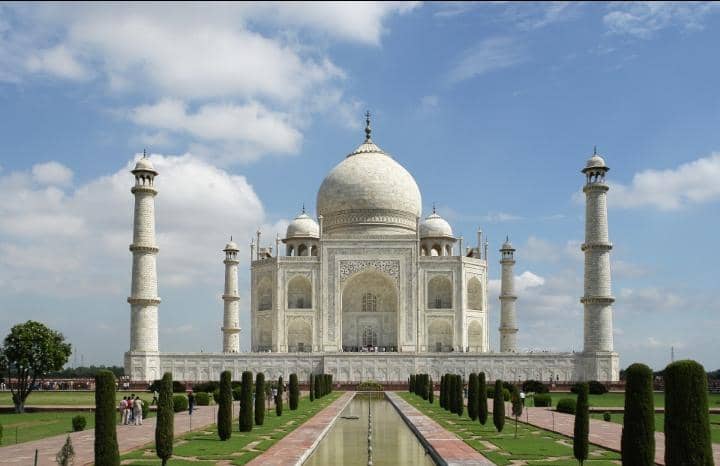The Taj Mahal, located in Agra, India, is a magnificent ivory-white marble mausoleum commissioned by Mughal Emperor Shah Jahan in memory of his beloved wife, Mumtaz Mahal.
Construction began in 1632 and was completed in 1653, symbolizing an enduring love story that transcends time.
This UNESCO World Heritage site is celebrated not only for its breathtaking beauty but also for its intricate architecture, making it one of the most recognized monuments in the world.
The architectural brilliance of the Taj Mahal is a fusion of Persian, Indian, and Islamic styles, showcasing the finest examples of Mughal architecture. The main dome, soaring to 240 feet, is surrounded by four smaller domes and flanked by four minarets, creating a harmonious symmetry.
The mausoleum is adorned with exquisite inlay work using semi-precious stones, adding to its visual splendor. The surrounding gardens, designed in the traditional Charbagh layout, enhance the serene atmosphere, reflecting the grandeur of the monument.
One of the unique features of the Taj Mahal is its color-changing properties. The white marble façade appears to shift hues throughout the day, ranging from a soft pink at dawn to a brilliant white at noon, and finally to a golden hue at sunset. This optical illusion, combined with the reflective pools that mirror the structure, creates a captivating visual experience for visitors.
The Taj Mahal complex includes not only the mausoleum but also a mosque and a guest house, all set within meticulously landscaped gardens. The intricate calligraphy and floral motifs found throughout the site further emphasize the artistic mastery of the Mughal era.
The careful planning and execution of the Taj Mahal reflect the advanced engineering techniques of the time, employing thousands of artisans and craftsmen.
Today, the Taj Mahal stands as a symbol of love and devotion, attracting millions of visitors from around the globe. Its historical significance, architectural beauty, and emotional resonance continue to inspire awe, making it an enduring masterpiece of human creativity and a cherished part of India’s cultural heritage.

